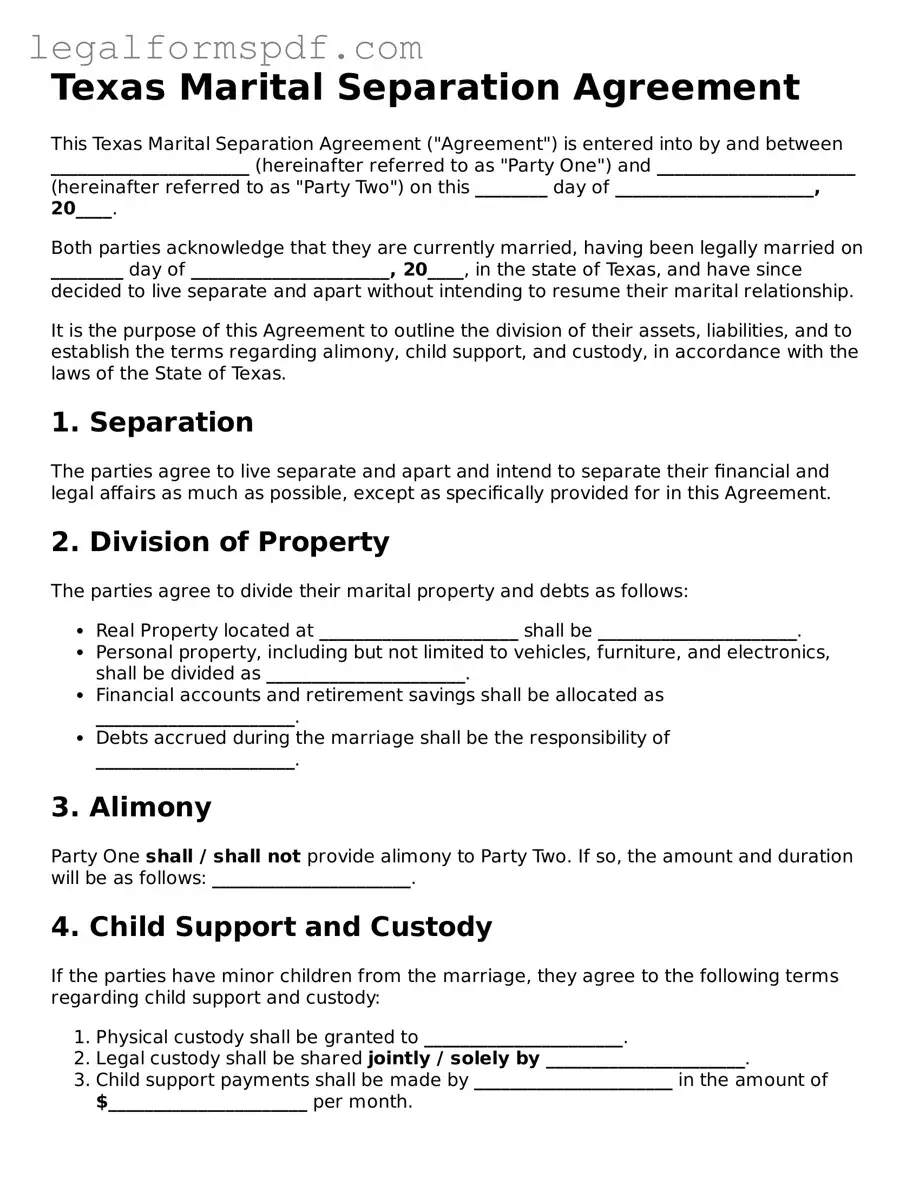Texas Marital Separation Agreement
This Texas Marital Separation Agreement ("Agreement") is entered into by and between ______________________ (hereinafter referred to as "Party One") and ______________________ (hereinafter referred to as "Party Two") on this ________ day of ______________________, 20____.
Both parties acknowledge that they are currently married, having been legally married on ________ day of ______________________, 20____, in the state of Texas, and have since decided to live separate and apart without intending to resume their marital relationship.
It is the purpose of this Agreement to outline the division of their assets, liabilities, and to establish the terms regarding alimony, child support, and custody, in accordance with the laws of the State of Texas.
1. Separation
The parties agree to live separate and apart and intend to separate their financial and legal affairs as much as possible, except as specifically provided for in this Agreement.
2. Division of Property
The parties agree to divide their marital property and debts as follows:
- Real Property located at ______________________ shall be ______________________.
- Personal property, including but not limited to vehicles, furniture, and electronics, shall be divided as ______________________.
- Financial accounts and retirement savings shall be allocated as ______________________.
- Debts accrued during the marriage shall be the responsibility of ______________________.
3. Alimony
Party One shall / shall not provide alimony to Party Two. If so, the amount and duration will be as follows: ______________________.
4. Child Support and Custody
If the parties have minor children from the marriage, they agree to the following terms regarding child support and custody:
- Physical custody shall be granted to ______________________.
- Legal custody shall be shared jointly / solely by ______________________.
- Child support payments shall be made by ______________________ in the amount of $______________________ per month.
5. Entire Agreement
This document contains the entire agreement between the parties and supersedes any prior understanding or representation of any kind preceding the date of this Agreement. There are no other promises, conditions, understandings, or other agreements, whether oral or written, relating to the subject matter of this Agreement.
This Agreement may be modified or amended if the amendment is made in writing and is signed by both parties.
6. Governing Law
This Agreement shall be governed by the laws of the State of Texas.
Signatures
IN WITNESS WHEREOF, the Parties have executed this Agreement as of the date first above written.
Party One: ___________________________________ Date: ___________
Party Two: ___________________________________ Date: ___________
